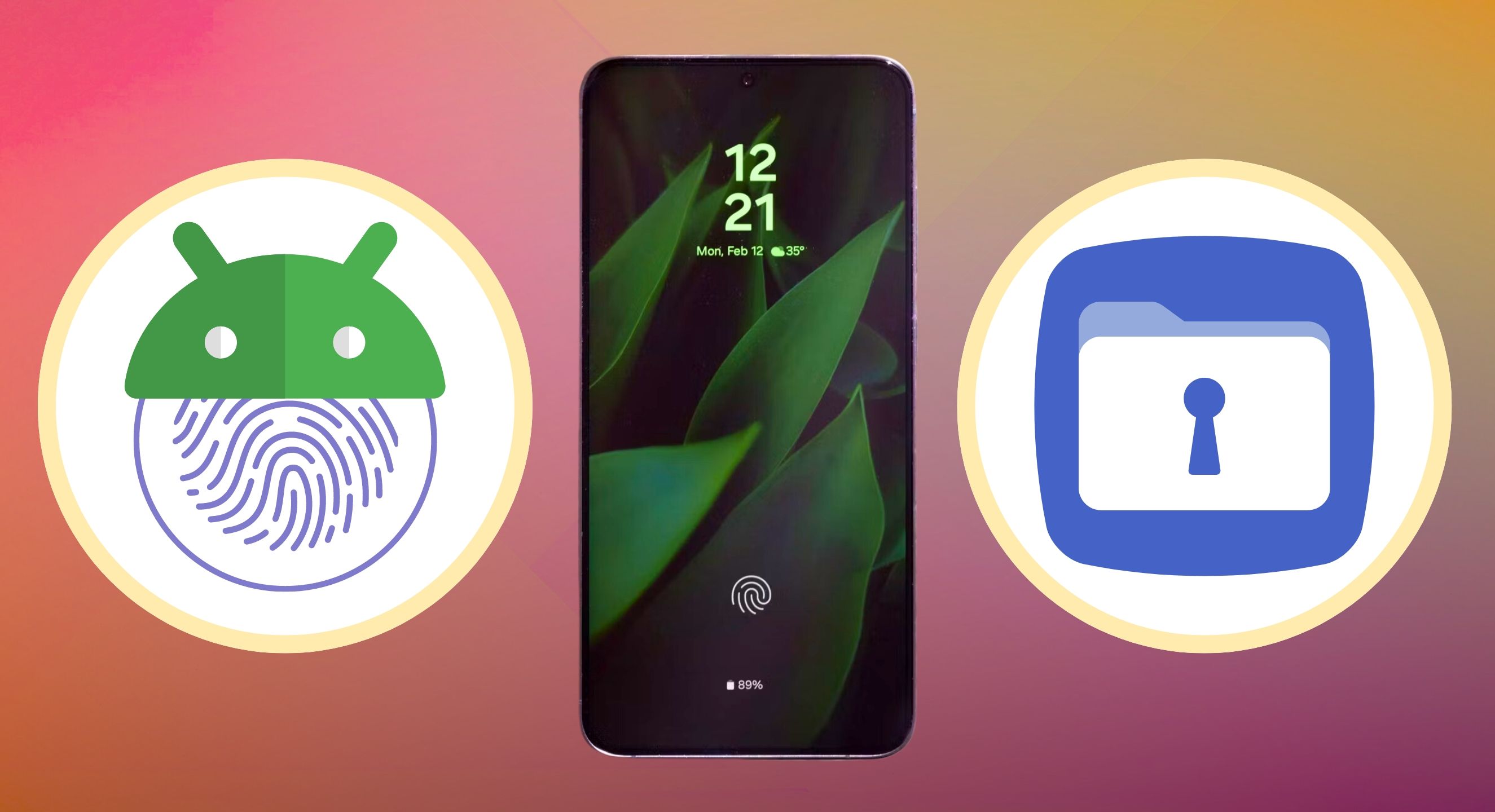For years, Samsung users have enjoyed the convenience and privacy of Secure Folder, a separate space on their Samsung Galaxy phones for sensitive apps, media, files, and data. With Android 15, Google joins the party with Private Space. I was curious how these features stacked up against each other. So, I put them to the test on my Google Pixel 8 and Samsung Galaxy S23 Ultra, diving into their setup, functionality, security, and user experience. Here’s what I discovered about Android’s Private Space and how it compares to Samsung Secure Folder.
Private Space vs. Secure Folder: Setup and access
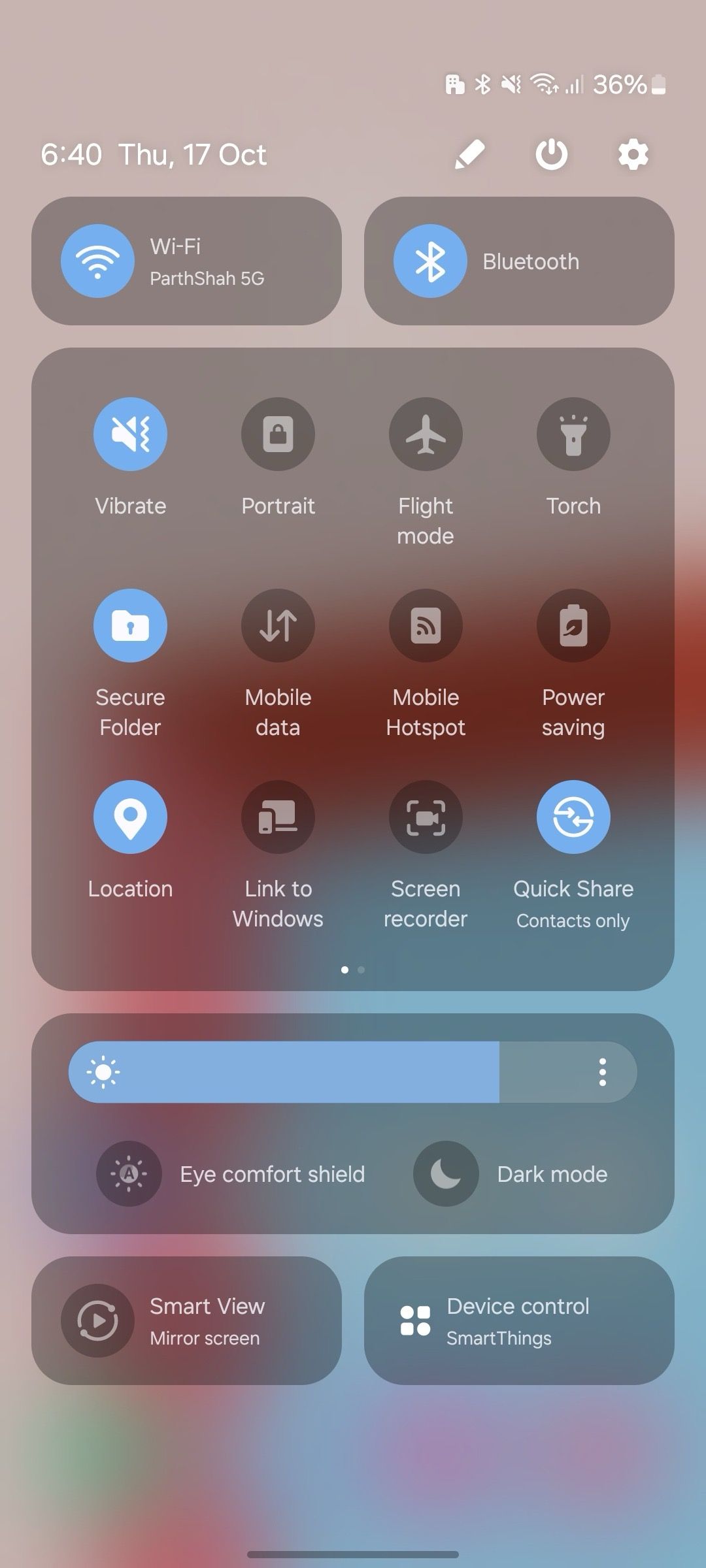
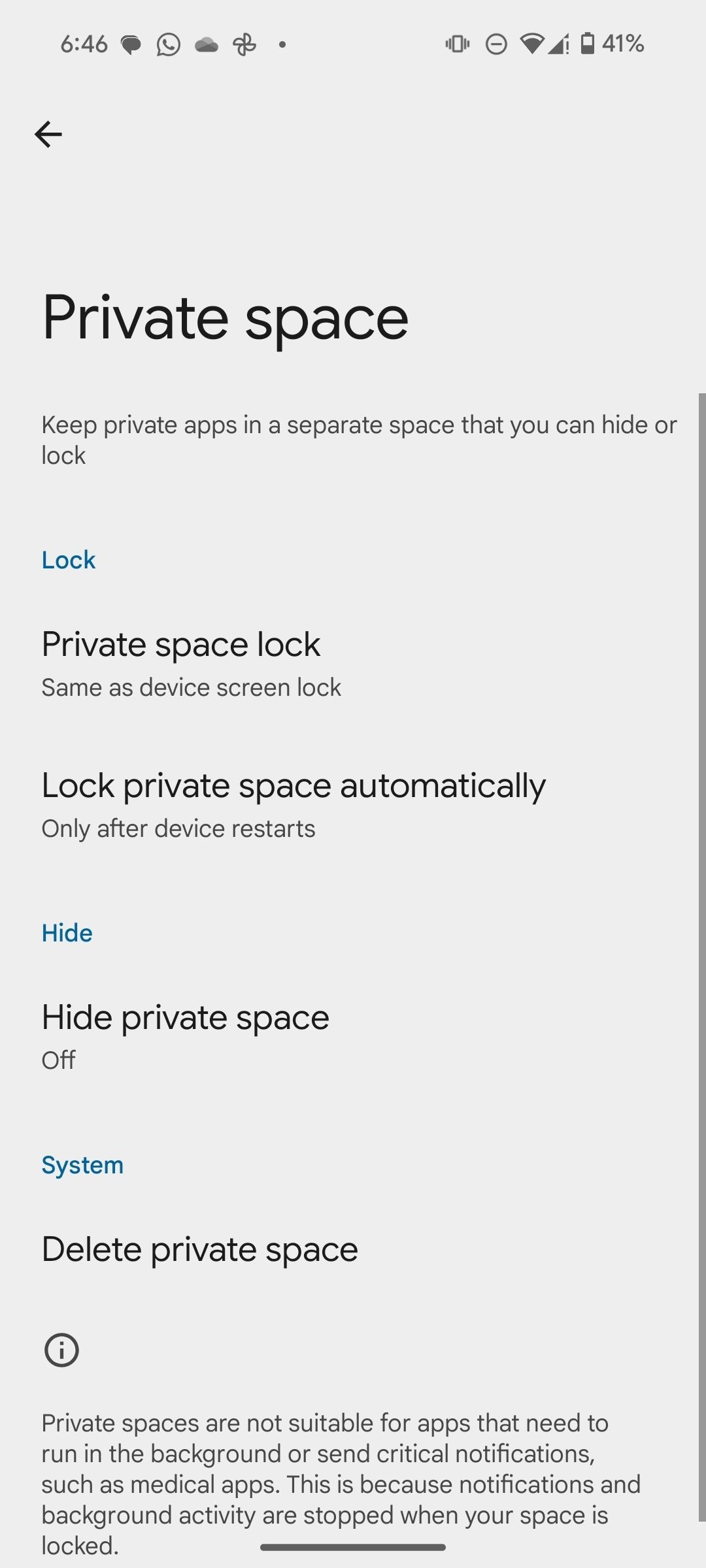
Private Space and Secure Folder are turned off by default, so go to Settings to activate them on your devices. With Secure Folder, you can switch it on from the quick toggles menu or add a dedicated shortcut to the Apps screen. Private Space is accessible under the Settings > Security & privacy menu. After turning it on, open the app drawer, scroll to the bottom, and check your separate space.
Private Space gives the impression of being seamlessly integrated into the system, whereas Secure Folder behaves and feels more like an additional app on your Samsung device. Setting them up with biometrics won’t take much of your time.
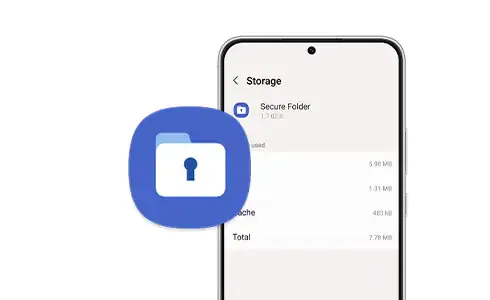
Related
Samsung Secure Folder: The encrypted folder application every Galaxy smartphone owner should use
Keep your sensitive files private with Secure Folder
Private Space vs. Secure Folder: Customization
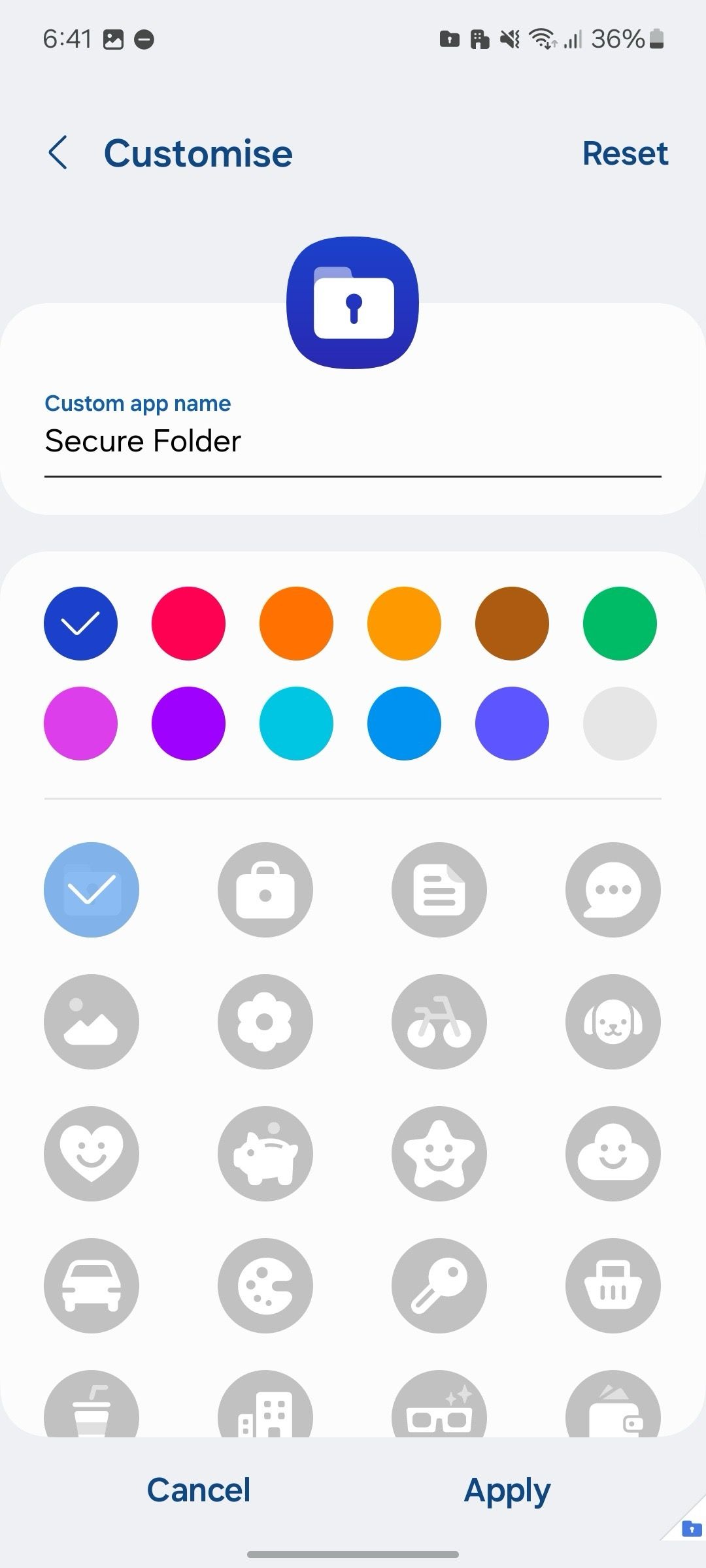
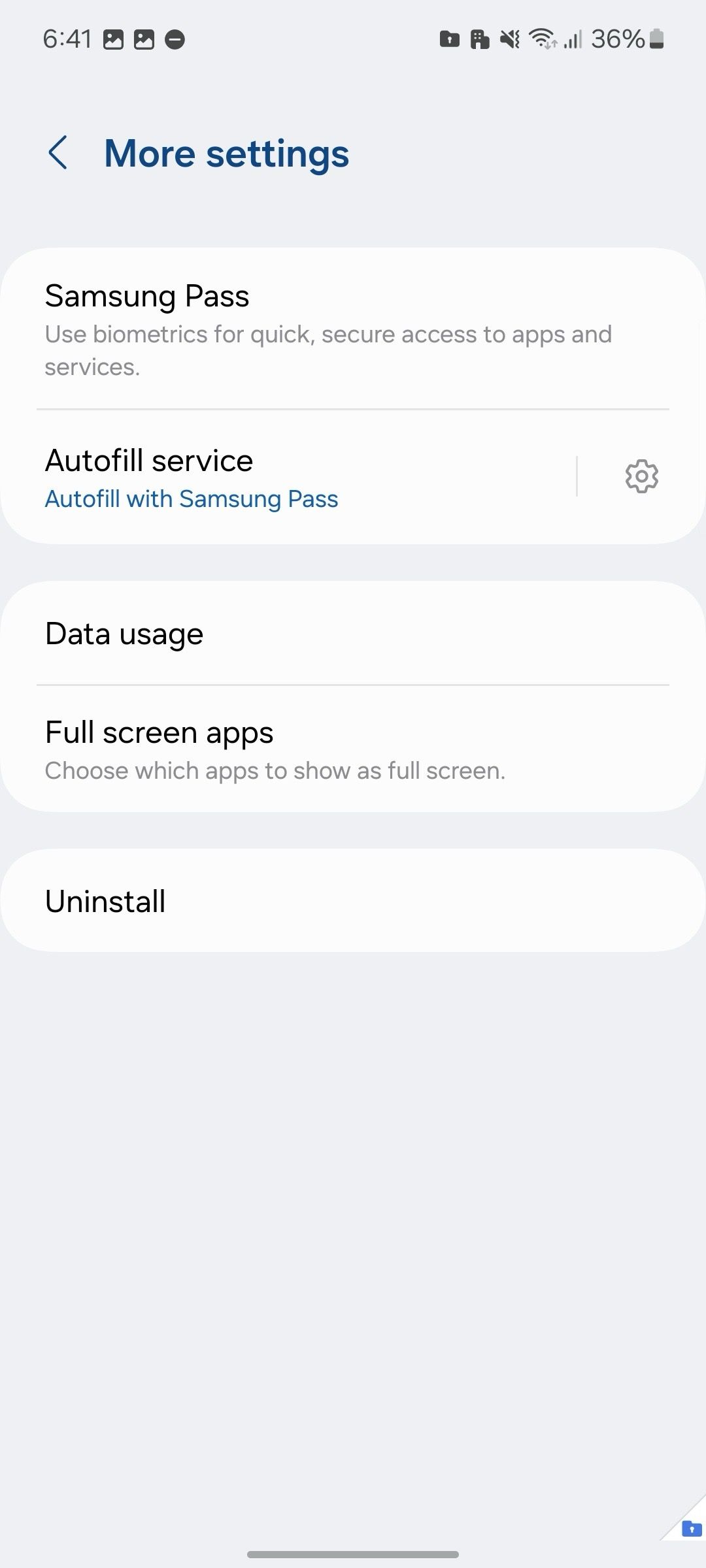
Customization is where Samsung’s years of expertise and development shine. You can hide Secure Folder from your app screen. You can also navigate to Secure Folder Settings to designate a custom app name, color, and an unidentifiable icon to disguise it among other installed applications. The default folder lock icon is too obvious and gives itself away. However, you can assign any random icon like a wallet, car, paint, or key from the customization menu and avoid drawing attention to it.
There’s an option to turn off clipboard set data usage and autofill service for your Secure Folder. Private Space pales in comparison here. You can only hide it from the App drawer (and later access it by typing private space in the search bar).
Private Space vs. Secure Folder: Security and data protection
Secure Folder and Private Space let you sign in with another Google ID and install banking, collaboration, and other work apps. You can use any method to lock it from prying eyes.
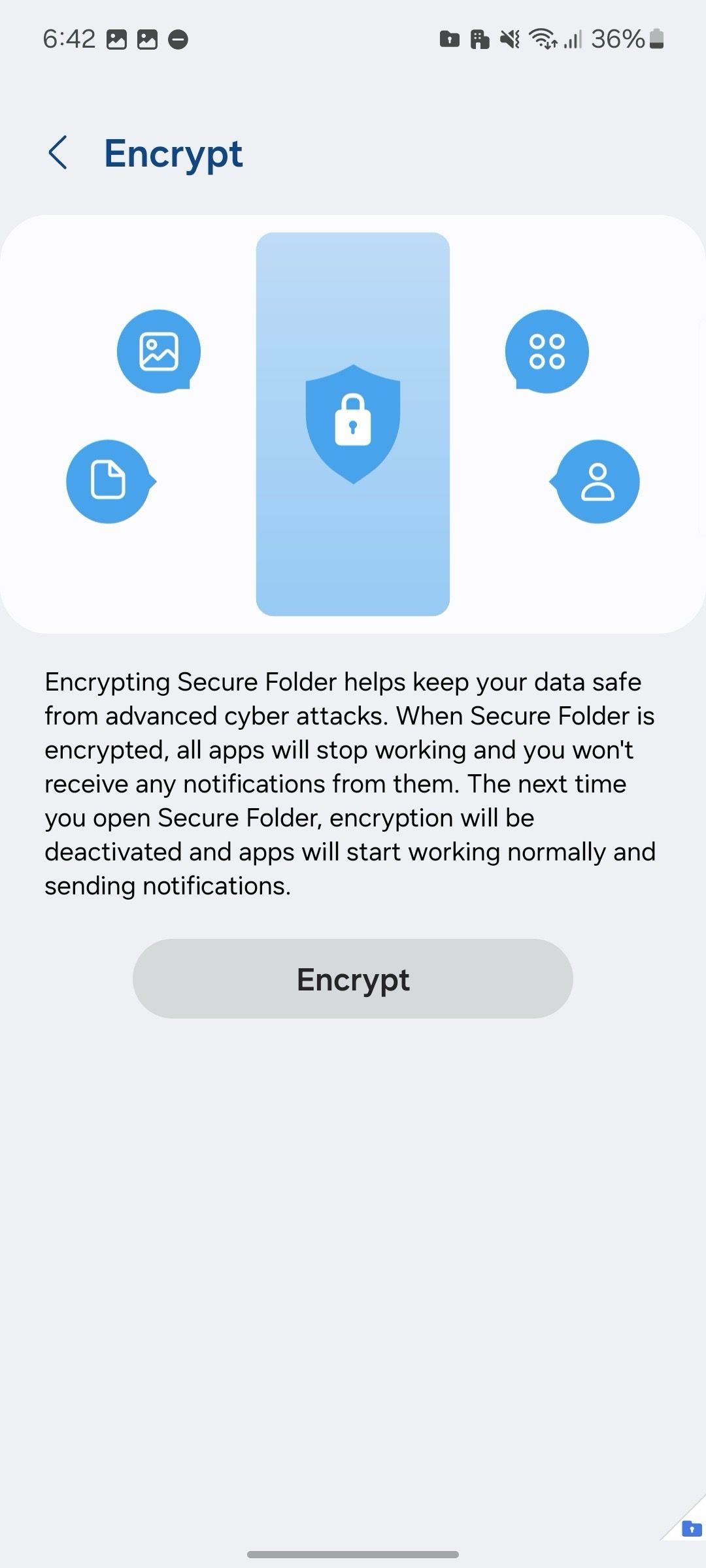
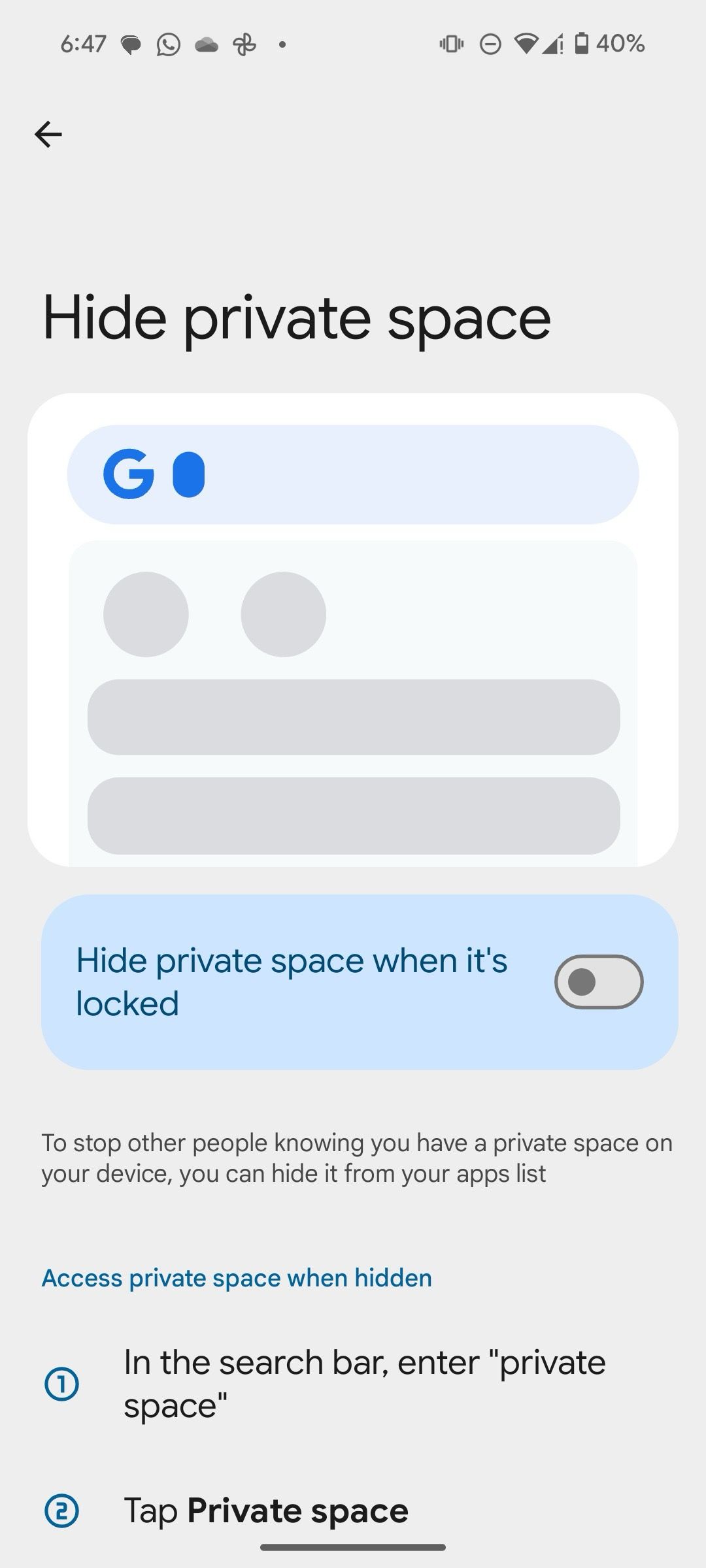
As for Secure Folder, it uses Samsung’s Knox security platform to keep your confidential data safe. You can encrypt Secure Folder to shield your data from cyberattacks. When Secure Folder is encrypted, all apps stop working, and you don’t receive alerts. The next time you open it, the system deactivates encryption, and your apps work normally with instant alerts.
Private Space only supports biometrics to keep your data safe. It also hides your apps in the permission manager, privacy dashboard, and other settings when Private Space is locked. Also, Private Space can’t be restored to a new device. You must set up another space and sign in with the same Google account.
Private Space vs. Secure Folder: Features
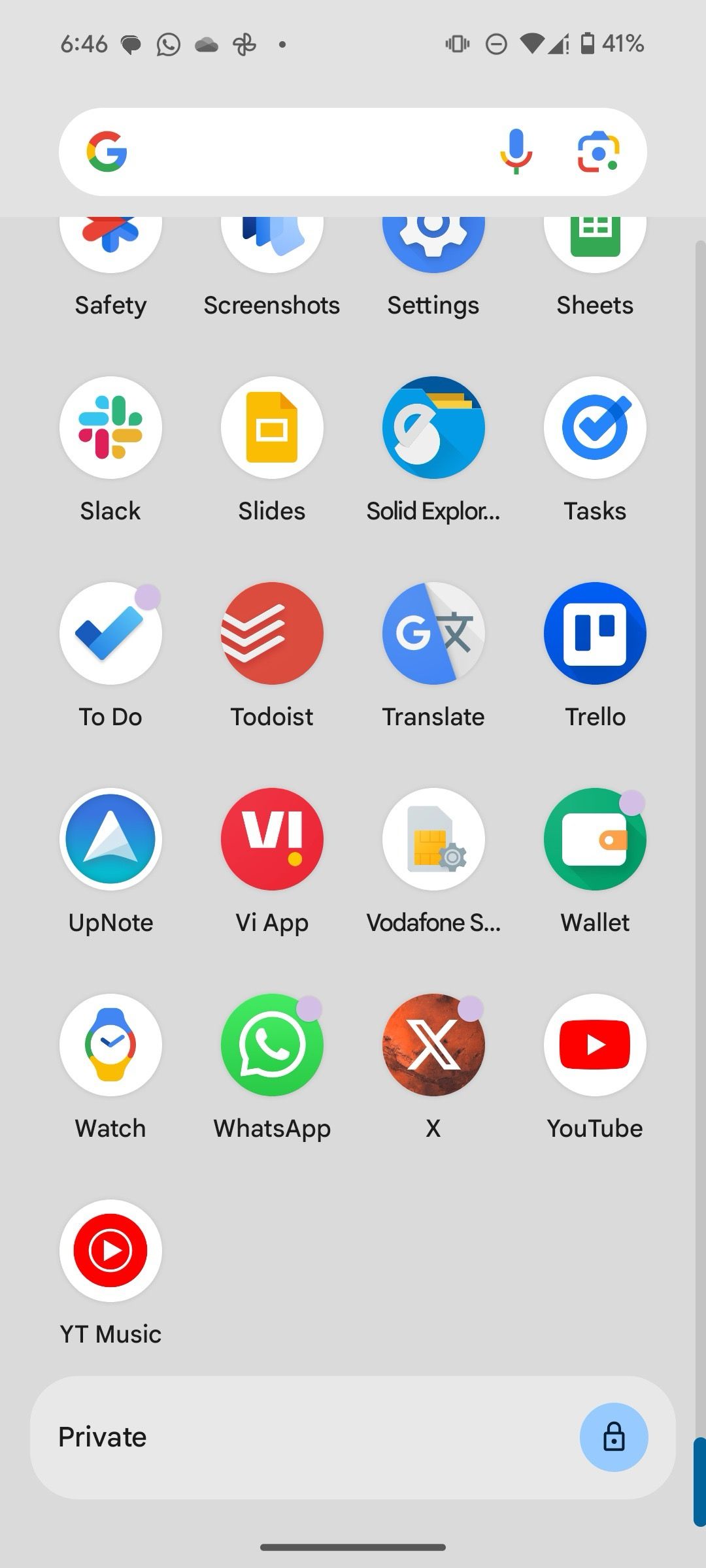
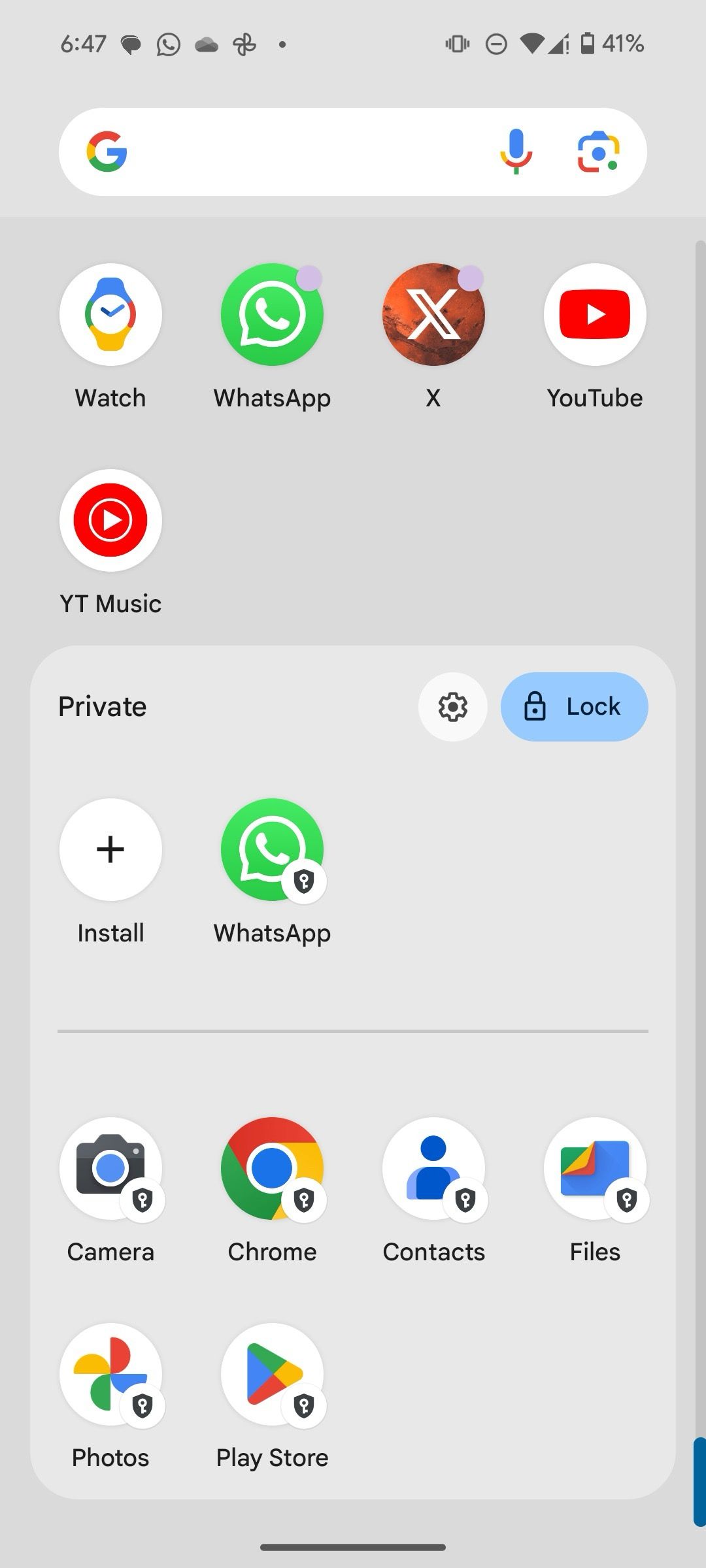
Private Space is straightforward. Sign in with another Google account, go to the Play Store, and download essential apps. There is no way to move your existing apps, files, and media to Private Space, which is a bummer in my book.
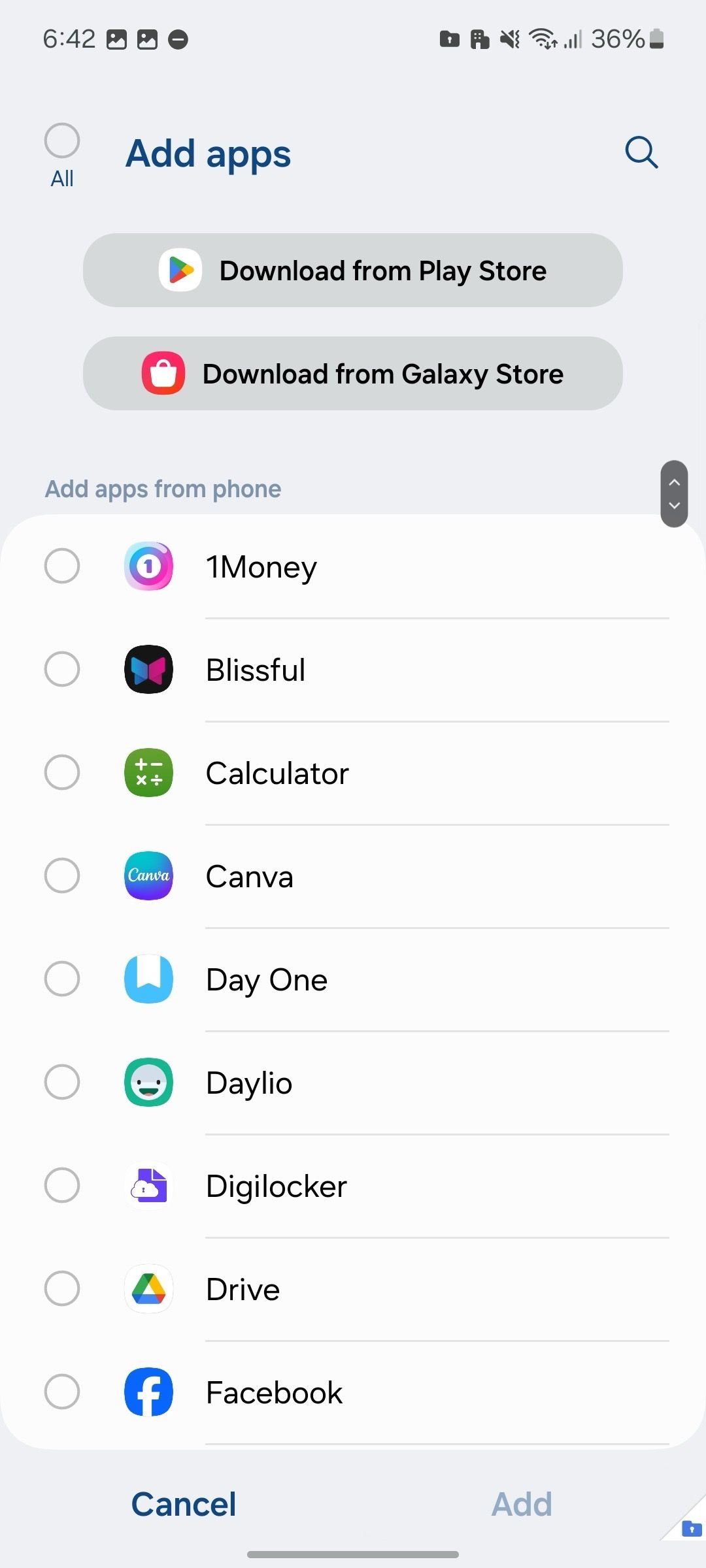
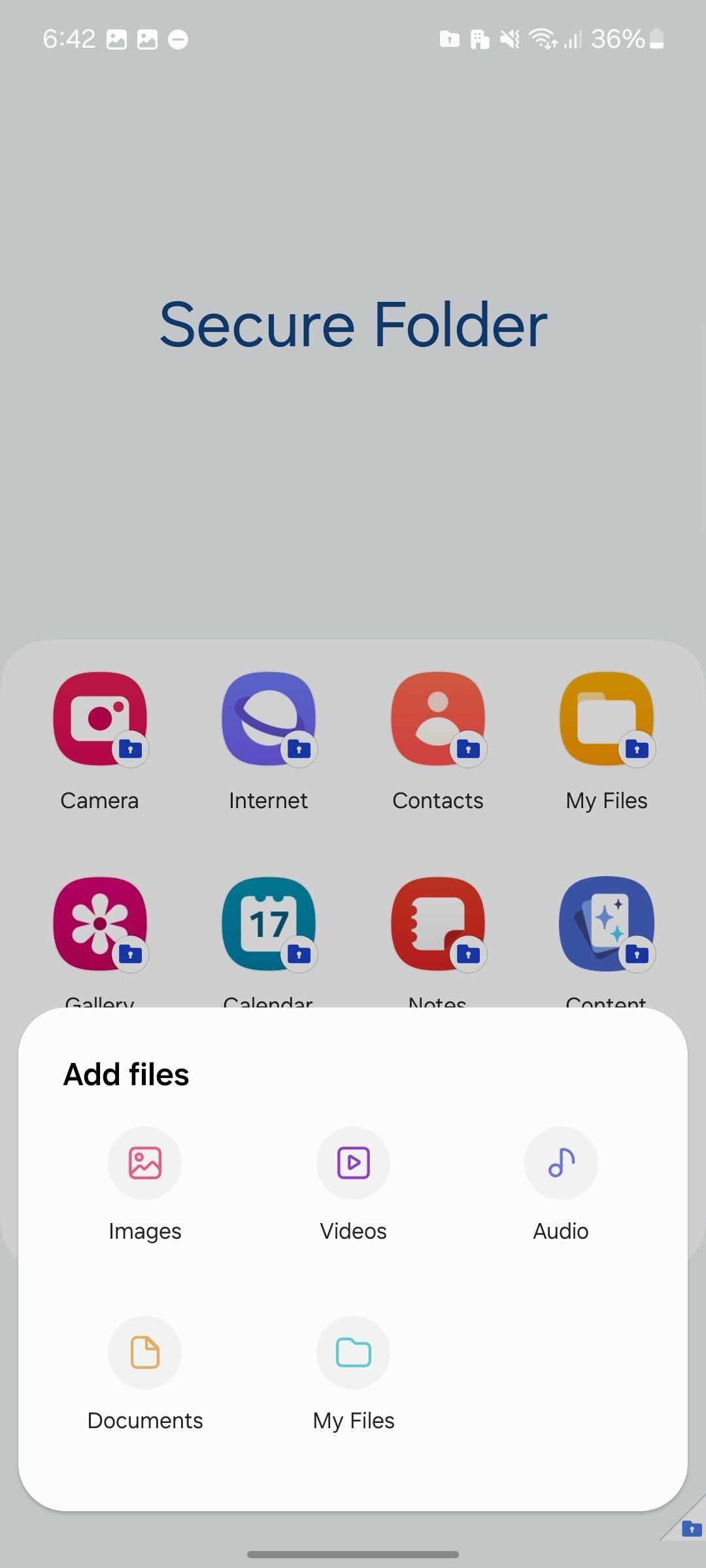
Secure Folder is flexible here. You can clone your existing apps and sign in with account details without using another Google ID and Play Store. Tap + at the top, download apps from Play Store or Galaxy Store, or select existing ones from your device. You can also move or copy your existing images, videos, audio clips, and documents from your phone storage to Secure Folder.
Samsung offers a couple of neat add-ons to take the user experience to the next level. The first one is content suggestions, where Secure Folder looks for specific clues like social images that show drinks or pictures of your credit and debit cards and suggests making such content private. You can also select identifiers to get suggestions for which images to make private. This is a minor but thoughtful feature can save a lot of time if you take a lot of photos.
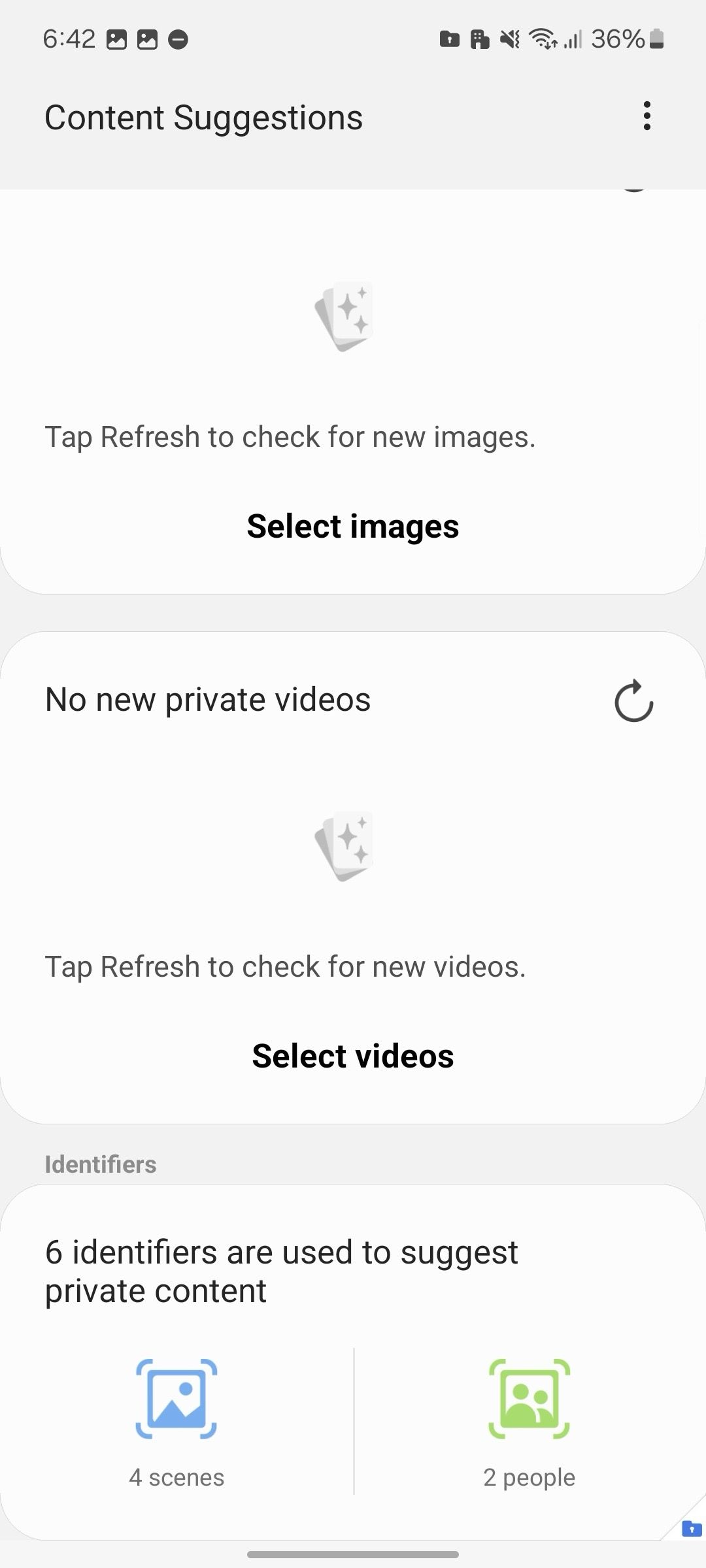
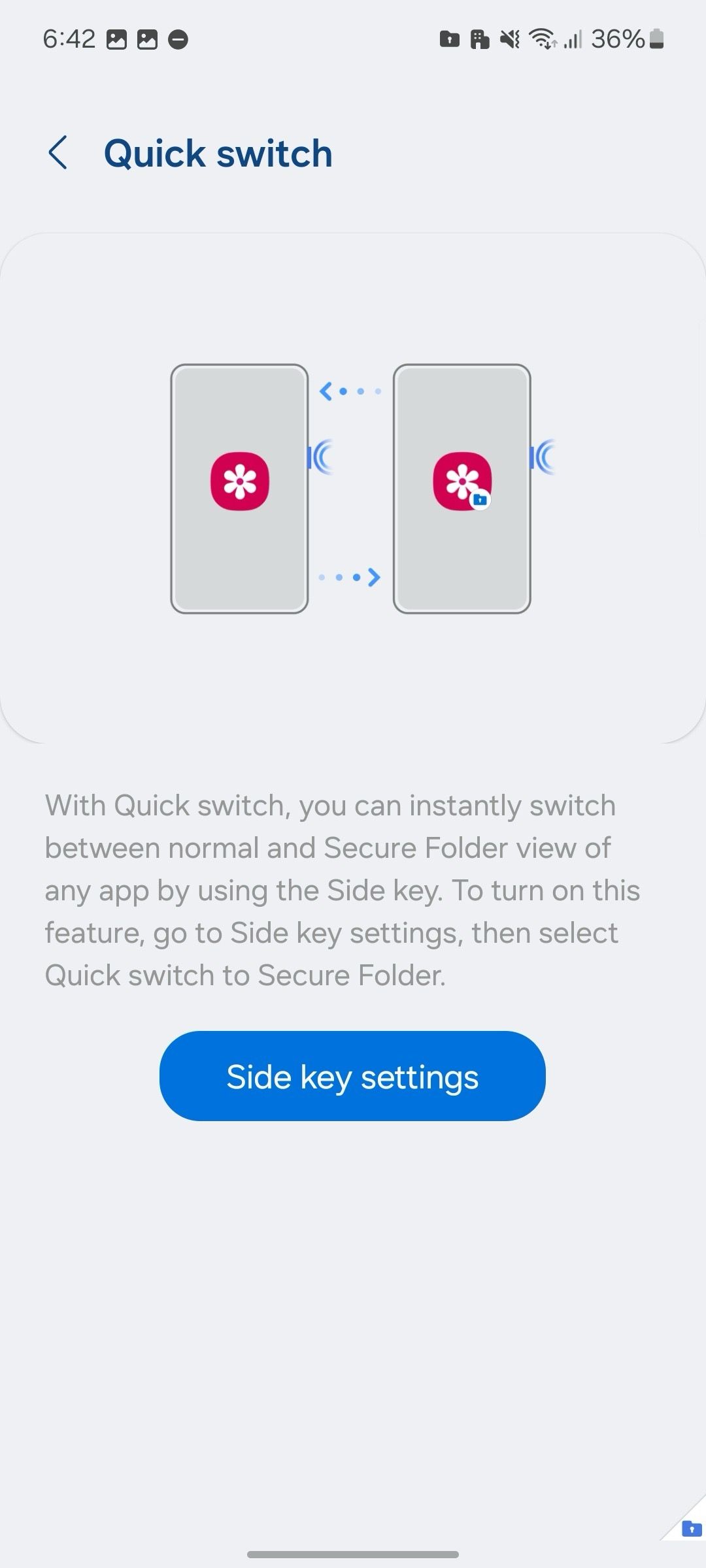
Another handy function is Quick Switch, where you can switch between the normal and Secure Folder view of any app using the Side key. Suppose you are browsing the Gallery app on your phone and want to open your private media library in Secure Folder. You can tap the side key, authenticate, and open the media library in Secure Folder.
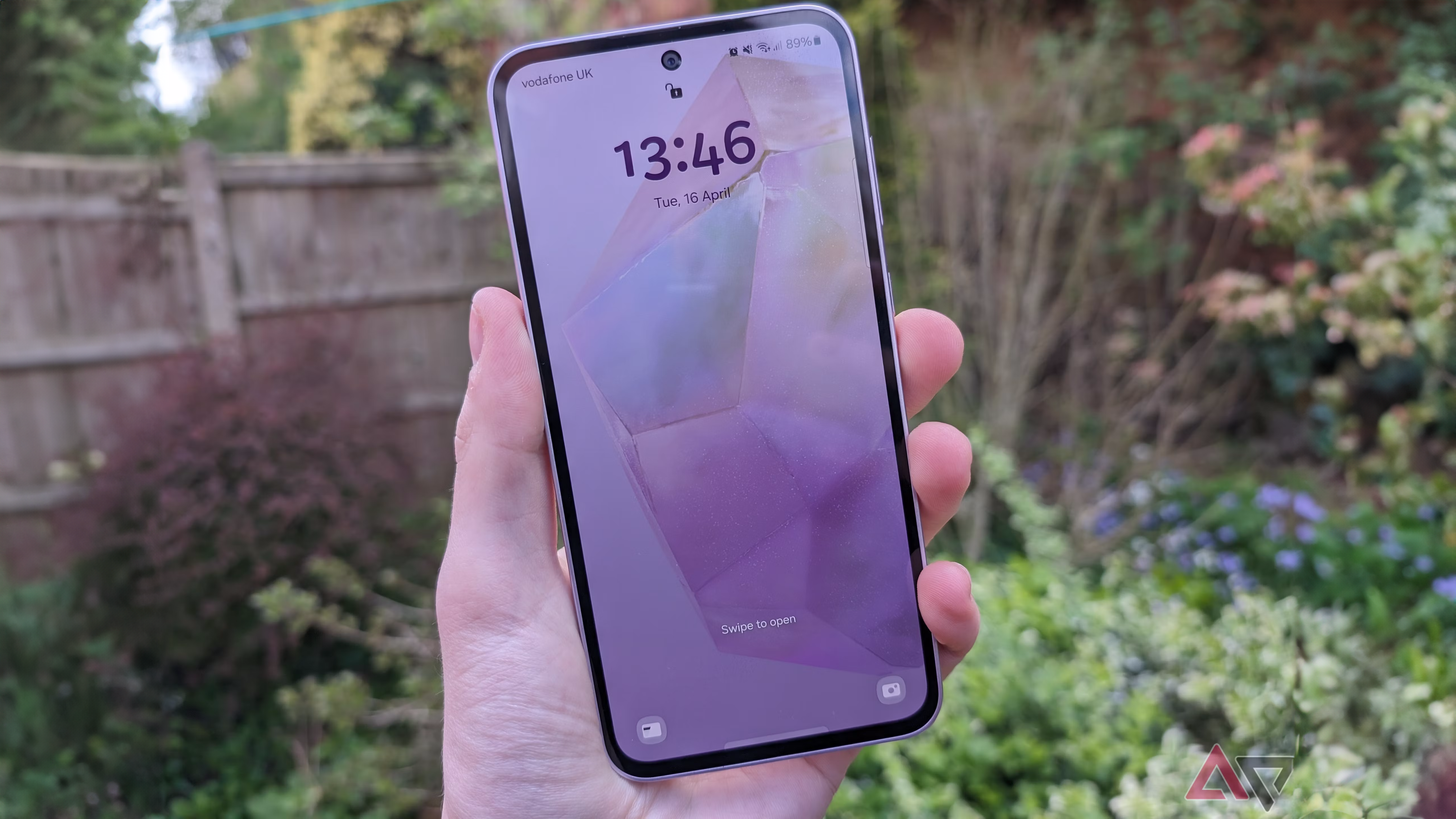
Related
Samsung Secure Folder: 5 tips and tricks every Galaxy smartphone owner should try
Secure your private files with these tips and tricks
Enable a split personality on your phone
Google’s solution delivers a clean, minimalist experience, and it’s easy to use and blends smoothly with the app drawer. However, Samsung’s Secure Folder has a bit of an advantage since it’s been around for years. Secure Folder is more customizable and flexible and offers neat add-ons, such as content suggestions, to detect and move your private media quickly.
Google created a solid foundation with Private Space, but it doesn’t match the versatility of Secure Folder. That said, Google didn’t stop with Private Space on Android 15. The latest update is packed with many security add-ons.

